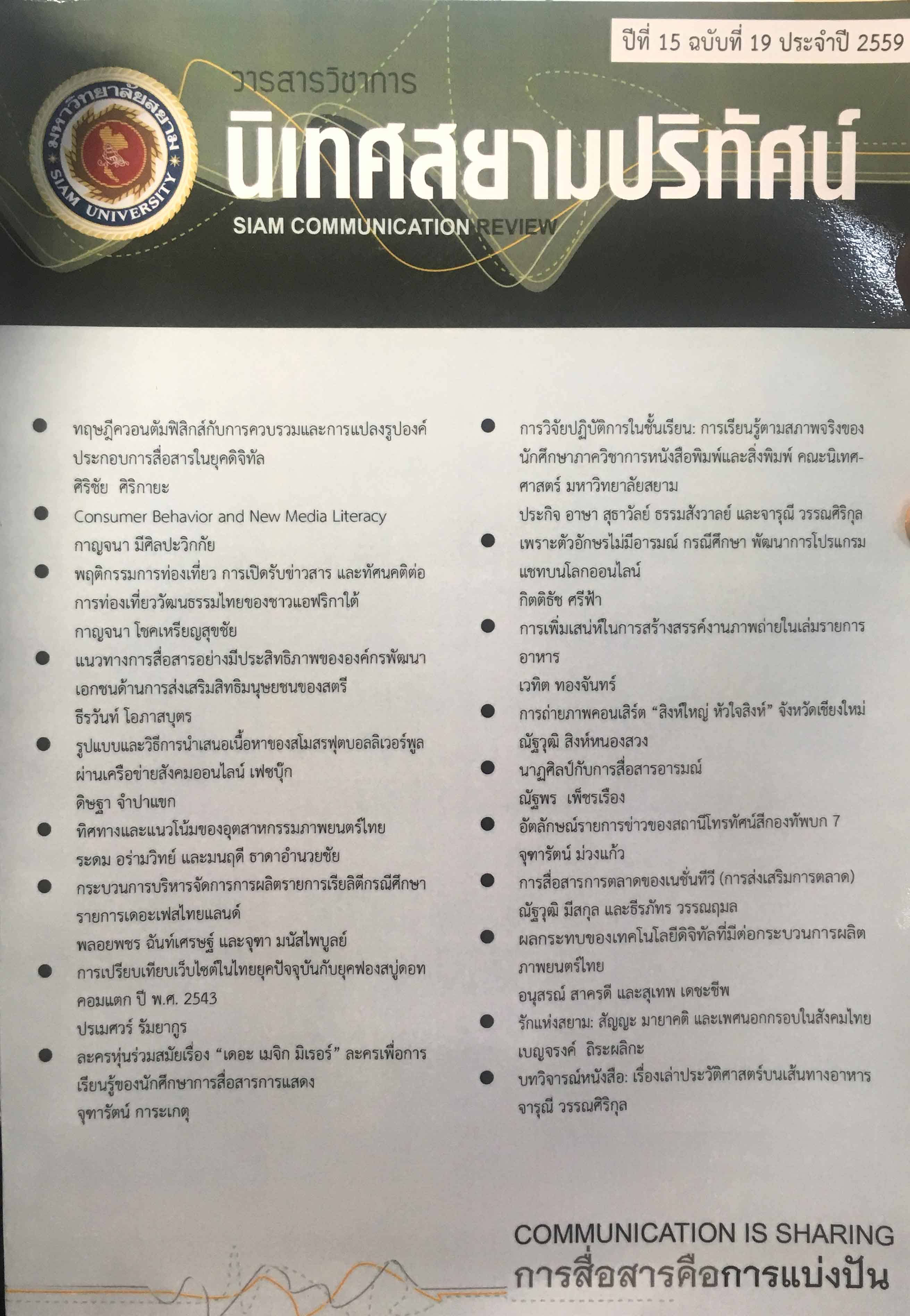Dancing Arts with Emotional Communication
Main Article Content
Abstract
Delivering feelings and enthusiasm are the foremost important things in dancing arts. If actor provides a splendid performance but lacks of emotion, audience will lose their impression or show appreciation eventually. The new generation of actor in dancing arts should learn the principal on how to deliver feelings and emotion of the performance by studying and understanding their very own role and characters thoroughly which leads to belief and acting. Actor has to concentrate in both rehearsal and on stage. Concentration provides actor’s imagination deferring along with their role and character. This will lead to performing arts communication by movements. Deliver feelings and emotions between actor and audience providing dancing arts aesthetic.
Article Details
References
ตวงพร มีทรัพย์. (2559, 11 ธันวาคม). ศิลปินอิสระ. [บทสัมภาษณ์].
นันทนา สาธิตสมมนต์. (2559, 11 ธันวาคม). อาจารย์ประจำภาควิชานาฏศิลป์ศึกษา คณะศิลปศึกษา สถาบันบัณฑิตพัฒนศิลป์. [บทสัมภาษณ์].
ภานุมาศ ผลพิกุล. (2559, 11 ธันวาคม). อาจารย์ประจำสาขาวิชานาฏศิลป์และการแสดง มหาวิทยาลัยราชภัฏวไลยอลงกรณ์. [บทสัมภาษณ์].
ภรตมุนี. (2541). นาฏยศาสตร์. (แสง มนวิทูร, ผู้แปล). กรุงเทพฯ: กองวรรณกรรมและประวัติศาสตร์ กรมศิลปากร. ศิลปะการแสดง. (2558). ใน วิกิพีเดีย สารานุกรมเสรี. สืบค้นเมื่อ 10 ธันวาคม 2559, จาก https://th.wikipedia.org/wiki/ศิลปะการแสดง
สดใส พันธุมโกมล. (2558). แนวทางการนำเสนอ. ใน นพมาส แววหงส์ (บก.), ปริทัศน์ศิลปะการละคร (พิมพ์ครั้งที่ 4), น. 45. กรุงเทพฯ: จุฬาลงกรณ์มหาวิทยาลัย.
สุรพล วิรุฬห์รักษ์. (2547). หลักการแสดงนาฏยศิลป์ปริทรรศน์. กรุงเทพฯ: จุฬาลงกรณ์มหาวิทยาลัย.


